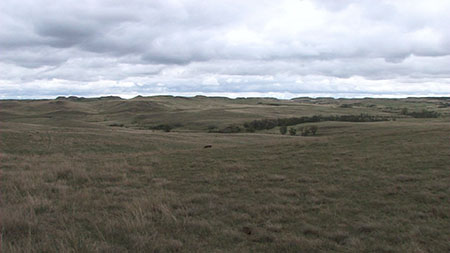The Stress of Living on the Edge

Isolation on the Prairie
Sixty percent of homestead filings ended in failure. Homesteading households lived with constant reminders that an illness, crop failure or loss of livestock could push their lives over the edge.
The Homestead Act’s requirement to live on the land meant individual farms would be a mile or so apart. This may not seem like a great distance now, but with few or no roads -- and no snow plows in the winter -- families routinely were cut off for months at a time.
Eleanor (Hutmacher) Urlacher recalls that her parents bought enough sugar, coffee and flour to last the winter and that it was not unusual to not be able to leave the farm for three months. If a child were to fall sick during this time, it was difficult or impossible to get medical care and, all too often, the child would die.
The isolation and tough living conditions took an emotional toll on the early homesteaders. This condition was so common it was called “Prairie Madness.” Women would cry uncontrollably, withdraw from social interactions and pay little attention to their appearance. Men would show signs of depression or sometimes violence. Often the only cure for “Prairie Madness” would be to abandon the homestead and move off the prairie.
Living on the Edge

